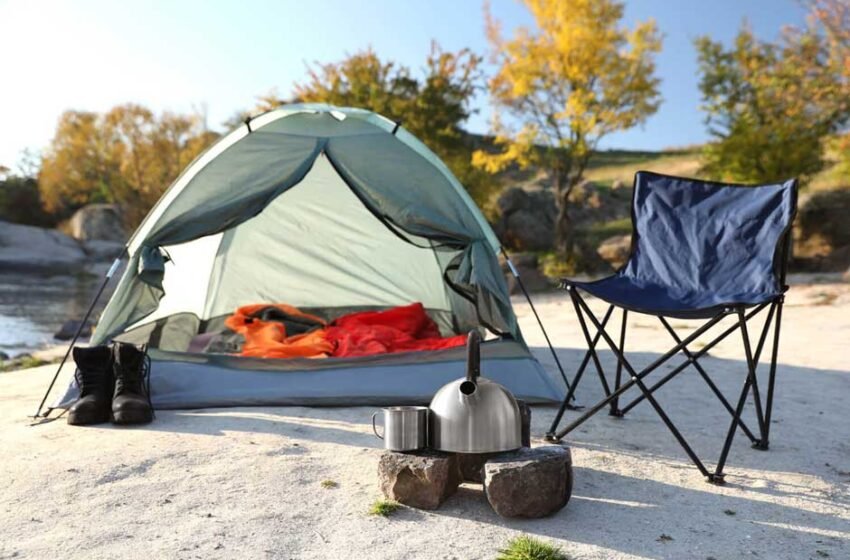Outdoor Camping Essentials: What You Need for a Great Adventure

Shelter and Sleeping Gear
When camping, having the right shelter and sleeping gear is important for a comfortable experience. A good tent keeps you safe from the elements, while quality sleeping bags and pads ensure a restful night.
Choosing the Right Tent
Selecting a tent is one of the first steps in planning your camping trip. Look for a sturdy, weather-resistant design to handle rain or wind. Ensure it has enough space for you and your gear. Tent capacity is key; choose a size based on how many people will sleep inside.
Make sure the tent comes with durable tent stakes to secure it in place. Also, consider the weight and ease of setup if you plan to hike to your campsite. A tent with a rainfly adds extra protection from moisture.
Sleeping Bags and Sleeping Pads
Your sleeping bag is your cozy place at night. Choose one based on the expected temperature. Three-season sleeping bags are great for spring through fall. For winter camping, look for a four-season bag to keep you warm.
A sleeping pad is just as important. It provides cushioning and insulation from the cold ground. Look for self-inflating pads for convenience, or foam pads for durability.
Make sure your sleeping bag fits well inside your pad, and consider a packable option for easy transport.
Pillows and Air Mattresses
Comfortable pillows can make a big difference in your sleep quality. You can use a lightweight camping pillow or stuff a sack with clothes for a DIY option. Some prefer inflatable pillows for their compactness.
If you want extra comfort, consider an air mattress. They offer more support than sleeping pads and can improve your sleeping experience. Look for ones with built-in pumps for easy setup.
Sizing is important, too—make sure your mattress fits inside your tent without taking up too much space. This will help you keep your gear organized and comfortable at night.
Essential Camping Equipment
When planning your camping trip, having the right equipment makes all the difference. This section includes key items you’ll need for lighting, navigation, and comfort to enhance your outdoor experience.
Headlamps and Lighting
Good lighting is essential when you’re camping. A reliable headlamp is hands-free and allows you to see clearly at night. Look for a model with adjustable brightness settings for flexibility.
Portable generators are a must, as you don’t want to be caught in the dark. You can also bring a lantern for your campsite. This lighting option creates a warm atmosphere and lights up larger areas.
Consider packing string lights for a bit of fun. They can make your sleeping area cozy while serving as decoration. Make sure your lighting items are durable and weather-resistant to handle the elements.
Navigation Tools
Navigating the outdoors can be tricky without the right tools. A classic map is always helpful, as smartphones can lose signal in remote areas. Make sure to familiarize yourself with the area before you go.
A compass is another crucial navigation tool. Learning how to use a compass along with your map can help in unfamiliar terrains.
For convenience, consider a portable GPS device. This can be a backup option to help you stay on track. Always double-check your route before heading out so you know exactly where you’re going.
Camp Chairs and Comfort Items
Comfort should not be overlooked while camping. Camp chairs are a great addition to your gear. Look for lightweight and foldable options to save space and make transportation easier.
Bringing a camping pillow can greatly improve your sleeping experience. It supports your neck and back, allowing for a better night’s sleep.
Lastly, having a soft blanket can provide warmth around the campfire. These comfort items can help you relax after a long day of exploring. Organizing your gear with a camping checklist will ensure you don’t forget these important items!
Cooking and Food Storage Gear
When camping, having the right cooking and food storage gear makes a big difference. You need reliable tools to prepare meals and store food safely. Let’s look at the essential items you should consider.
Stoves and Grills
A good camping stove or grill makes cooking easy. Look for a portable stove that works with propane or butane. This type of stove is lightweight and easy to pack. For grilling, a compact charcoal grill is also popular.
In addition to the stove, don’t forget to bring:
- Matches or a lighter: These help you start your fire or stove.
- Tinder: This will assist in lighting your campfire quickly.
Having reliable equipment ensures you can cook meals, whether it’s boiling water or grilling burgers.
Cooking Utensils and Food Prep
Cooking utensils are vital for meal preparation. Bring the basics: a spatula, tongs, and a knife. A sturdy cutting board is also helpful for chopping vegetables or preparing meat.
Consider adding a set of measuring spoons and cups for precise cooking.
Pack your utensils in a lightweight bag to keep them organized. Here’s a quick list of must-have items:
- Spoons: For stirring and serving.
- Pots and pans: Look for non-stick or cast iron options.
These tools will make your cooking experience smoother and more enjoyable while camping.
Coolers and Food Safety
Keeping food fresh is crucial when camping. A high-quality cooler is a must-have. It helps keep perishable items like meats and dairy products safe.
Opt for a cooler with thick insulation to keep ice longer. If you plan on longer trips, consider a cooler with wheels for easier transport.
Remember to pack food in airtight containers. This prevents spills and keeps your food fresh. You should also keep raw meats separate from other foods to avoid contamination.
By focusing on proper food storage, you can enjoy safe and tasty meals in the great outdoors.
Personal Safety and First Aid
When camping outdoors, personal safety and first aid are crucial for a fun and secure experience. Having the right supplies and tools can help you handle emergencies effectively.
First-Aid Kit Basics
Your first-aid kit is a must-have for any camping trip. It should include essential items to treat minor injuries. Here’s a basic checklist:
- Bandages: Various sizes for cuts and scrapes.
- Antiseptic wipes: To clean wounds.
- Gauze pads and tape: For larger injuries.
- Elastic bandage: To wrap sprains.
- CPR face shield: For emergency resuscitation.
Make sure to check the kit before you leave. Replace any used items and add medications, like pain relievers and antihistamines. Store your kit in a dry, easy-to-reach place.
Knives and Tools
Having the right tools can make your camping experience smoother. A good knife is essential for various tasks like food preparation, cutting rope, and making kindling.
Choose a knife that feels comfortable in your hand and is durable. If you have room, carry a multi-tool. This can provide additional features like screwdrivers and scissors.
Remember: Always handle knives carefully to prevent accidents. Keep them stored safely when not in use.
Fire Starters and Emergency Gear
Fire starters are vital for staying warm and cooking food in the backcountry. Bring waterproof matches, a lighter, and some tinder. Tinder can be dry leaves, small twigs, or specialized products from stores.
Consider packing an emergency blanket to retain body heat. It’s lightweight and can help if you’re stuck outside unexpectedly. A whistle can also signal for help if needed.
Pack these items in an accessible spot in your gear. Being prepared can make all the difference in a challenging situation while camping.
Clothing and Footwear
Choosing the right clothing and footwear is vital for a comfortable camping experience. You want gear that keeps you protected from the elements while being rugged enough for outdoor activities.
Shoes and Hiking Boots
When selecting shoes, consider durability and comfort. Hiking boots are ideal for rough terrains. Look for boots that offer good ankle support and traction. Features to consider include:
- Waterproof Material:Keeps your feet dry in wet conditions.
- Breathable Fabric:Helps keep your feet cool.
- Good Tread:Prevents slipping on various surfaces.
If you’re spending time around the campsite, consider comfortable slippers or sandals to relax in. Remember to pack socks made from synthetic or wool material for better moisture management.
Weather-Appropriate Apparel
Dress in layers to adjust to changing weather conditions. Start with a moisture-wicking base layer to keep sweat away. Essential clothing items include:
- Long-Sleeve Shirts:Protects against sun and insects.
- Quick-Drying Pants/Shorts:Great for changing temperatures and quick drying.
- Lightweight Fleece or Jacket:Adds warmth during cooler nights.
Always include a good hat to shield your face from the sun and sunglasses to protect your eyes. Don’t forget sunscreen with a high SPF to protect your skin from harmful UV rays. Dressing smartly helps you stay comfortable and active during your trip.





